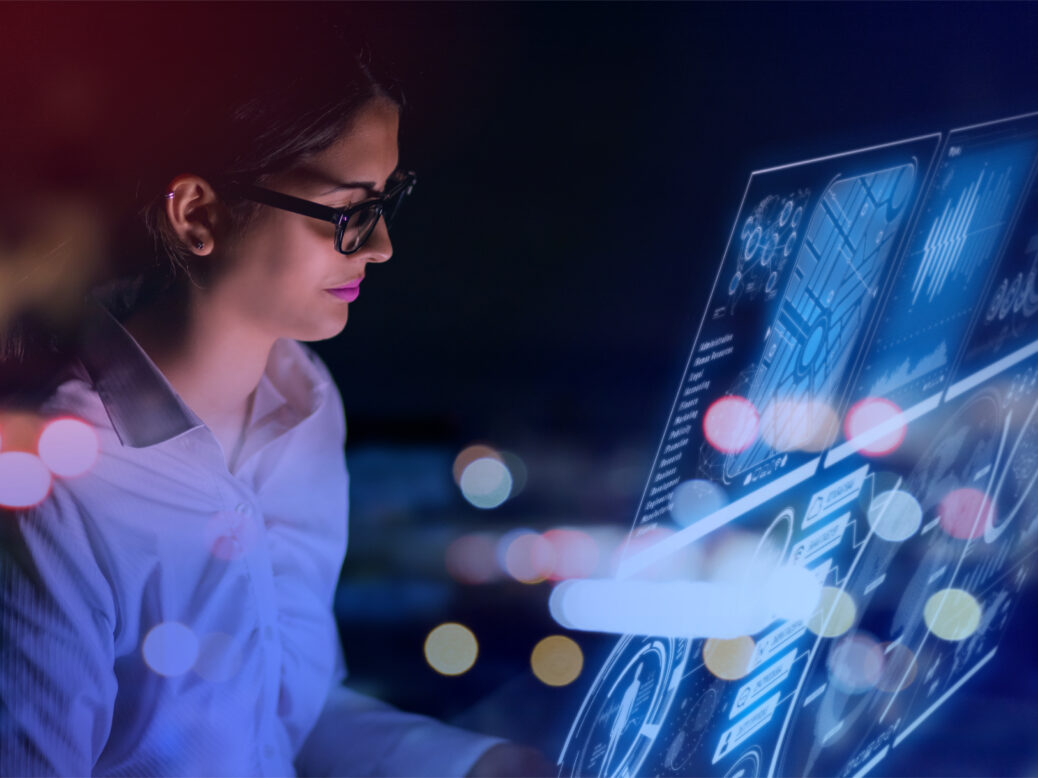
Operational and digital transformation is all in the data: how you collect it, what you do with it, the platforms you have to manage it and how you make it available. The ability to decouple data from applications allows organisations to really embrace operational transformation and digital transformation.
Volumes of data collected at the most granular level from IoT devices and digital platforms – effectively any technology system – can now be made available through application programming interfaces for analysis, business insights and developing additional applications.
We’re not just collecting more data, we’re also collecting more granular data, allowing us to deduce more insights than were ever possible. With enough datapoints, you can model behaviour and understand patterns – for example, the diet of someone’s biometric twin – and come to more accurate conclusions (the time it would take before a health incident occurs), more quickly, and at a fraction of the cost of modern-day science.
Data is also critical for next-generation technologies: digital twins, spatial computing, artificial intelligence, deep analytics and new applied versions of technology are all dependent on data platforms. The data platform will even enable the next generation of computing architectures, such as serverless computing.
Data lake or data swamp?
Data truly is the center of it all and it’s therefore critical to get the data platform right. Data strategies must consider the architecture for capturing and managing all types of data – structured, semi-structured, unstructured and streaming – and making it accessible through APIs and a data service catalogue so a wide set of stakeholders can use it to create new value.
It is data that allows insights that transcend human observations or interpretation and exposes truths or realities undetectable in the past. It is data that shows that it’s not the fastest cyclist who wins the race, and it is data that changes a public transport company into a provider of consumer presence patterns for the retail industry.
Organisations that don’t build these disciplines around data will find themselves swamped by its scale rather than inspired by its potential.
NTT’s Digital Twin Computing Initiative uses data such us geographical and transport information to create virtual societies that can accurately predict the spread of an infection and help to control a real-world outbreak, in real time.
Thanks to container-based architecture, we can run scaled-down stacks, process data and make decisions at the edge without even touching backhaul to the cloud or a data center. Edge processing will have a pervasive impact on the industry.
5G – on the edge or the periphery?
5G is a major talking point in the industry but it’s important to distinguish where the promise of pervasive broadband really lies, and that’s in the higher frequency (hence, higher bandwidth) range of 24 to 28 GHz.
The challenge of this frequency range is that the short wavelength is susceptible to interference and can’t penetrate solid materials (e.g. walls). It requires at least ten times the density of cell towers and base stations as the lower range (below 6GHz), which is where most pilots are currently taking place. This will require significant investment, so it could take years for mobile operators to find the business case to deploy high-frequency, high-impact 5G.
WiFi6, on the other hand, operates in the 2.4 GHz range and will likely have a greater impact on the edge for now. It’s more efficient than WiFi5, particularly in dense environments, where it’s up to four times better. WiFi6 also offers greater penetration, more subchannels and better performance – and has fewer base-station problems. Built-in algorithms for powering down help to optimise power usage and reduce energy consumption.
IoT: from myriad sensors to audiovisual sensors
IoT is changing at scale. We’re seeing audiovisual technologies being used to get the same input you’d receive from wiring up numerous IoT sensors. Audio analysis can identify the sound of breaking glass, for example, to trigger an alert. High-definition video allows for object processing, isolating and creating pattern libraries, and using pattern matching to monitor real-time events. Compared with individual sensors, these technologies provide feasible mass coverage at a lower cost.
There are several use cases for this audiovisual approach in smart buildings and smart cities, for example, where the cost of powering and maintaining myriad sensors is simply unfeasible. Audiovisual solutions have far greater possibilities to scale, making this a significant growth area.
Implications and impact of changes on the edge
These changes on the edge will have a profound impact on how we design and run everything from networks and data centers to applications and security, and how organisations get value out of new data they’re able to collect and process as a result.
In the innovation district of Las Vegas, high-definition video cameras, sound sensors and IoT devices deployed by NTT have improved situational awareness through video and sound data. The system can alert authorities to patterns that appear abnormal, helping to reduce response times for first responders.
Explore our other disruptive technology predictions for 2020 and beyond in our Future Disrupted: 2020 technology trends report, including applied technology bridging the digital and physical, the evolution of the computing model and hybrid compute, and programmability and predictive capabilities reshaping cybersecurity.
In our 2020 technology trends, NTT gather insights globally to understand the future and shape intelligent technology solutions for our clients. Our experts weigh in on the potential that lies in the changes we are seeing in the market, and the steps you can take in 2020 towards a disrupted future.
Co-innovation for complete solutions
Most organisations simply will not have the skills or resources to keep pace with every aspect of change in technology. Co-innovation will become increasingly important as organisations look to partner with technology providers that can offer R&D resources to help them address and solve these business challenges, give guidance on the best way forward and demonstrate proven use cases for proposed solutions. Above all, they will expect business outcomes, not technology solutions – which means technology companies will need both depth and breadth in their offerings to meet coming demand.
Frameworks for sharing intellectual property will be redefined. Co-innovation partners will contribute intellectual property assets, evolve jointly to solve specific business challenges and review monetisation models.
Ettienne Reinecke is chief technology officer at NTT Ltd.




